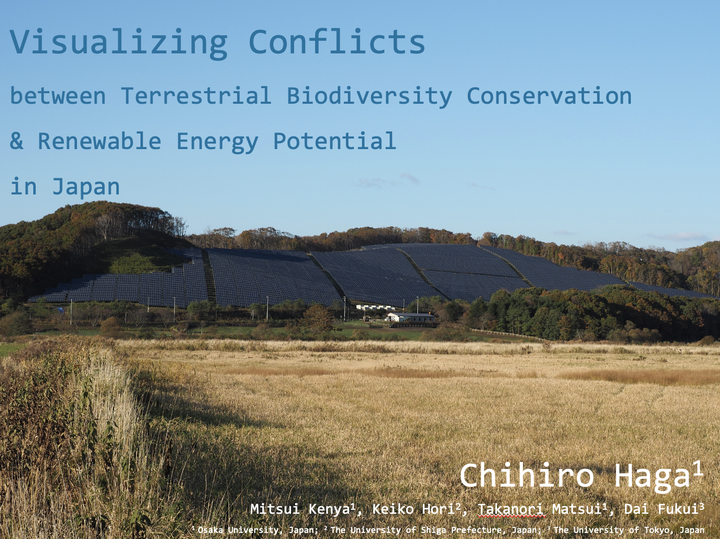Poster Presentation "Visualizing Conflicts between Terrestrial Biodiversity Conservation & Renewable Energy Potential in Japan"
 Image credit: Chihiro Haga
Image credit: Chihiro Haga
Abstract
30 by 30 is an essential goal for biodiversity conservation, while decarbonization requires a renewable energy (RE) installation on land. However, the unmanaged introduction of RE will cause trade-offs with the local biodiversity conservation through the alteration of habitat for wildlife and collision with wildlife. This study visualized the trade-offs at the national scale in Japan by overlaying spatial distributions of vegetation, birds, bats, and the potential of REs for the land areas. This study developed a database comprising indices of ecological data and RE potentials at 500 x 500 m. For the ecological indices, we referred to the selection criteria of OECM (Other Effective area-based Conservation Measures). The landscapes with high importance for conservation were evaluated by the amount of natural and secondary ecosystems; the spatial distributions of important species for conservation were evaluated by the breeding information of birds registered in the Red List and a diversity map of bat species. The potentials of solar, wind, hydropower, and geothermal powers, and woody biomass energy were collected from a previous study. The results showed that 65.1% of the land areas in Japan had conflicts between biodiversity and RE. The types of conflicts differed, reflecting local ecosystems, e.g., 1. high solar power and important birds; 2. high wind power and important bird and bat species; 3. high woody biomass and traditional secondary landscapes; and 4. high solar power and traditional secondary landscapes. These results can support the appropriate zoning of REs introduction that can achieve regional biodiversity conservation and decarbonization.